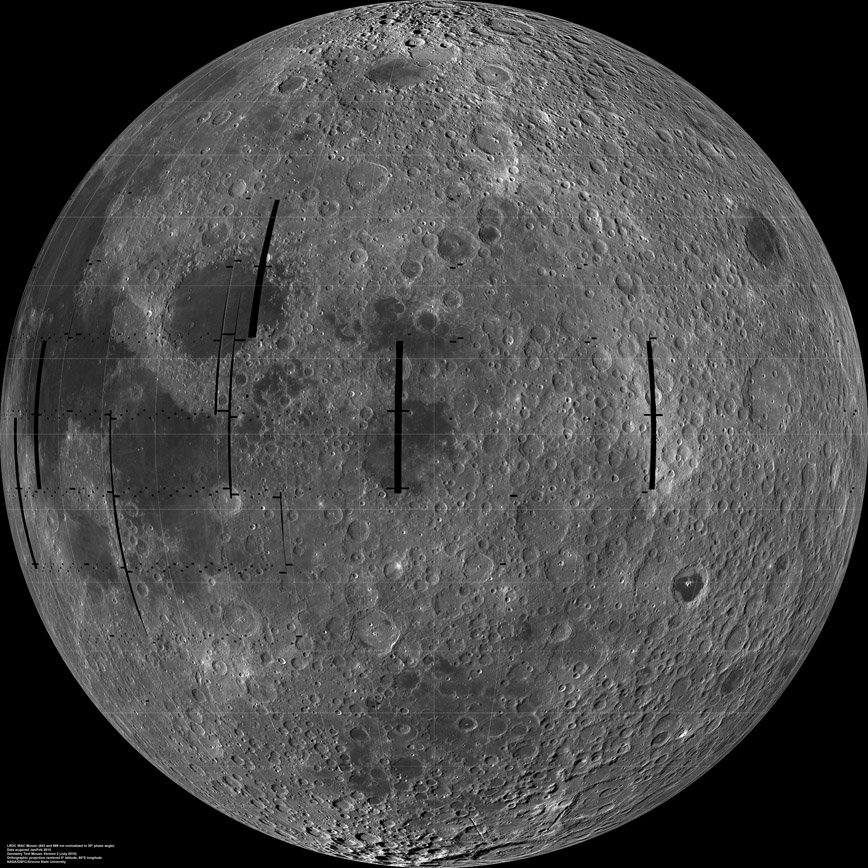December 31, 2014
2010 and the Future
Power failure last night, whole neighborhood dark for hours so the last LPOD delayed until this morning! LPOD will continue starting tomorrow by reposting all 11 years worth, day by day starting with Jan 1, 2004. The software is almost complete to do this automatically but for a short time I will do it manually. It will not be new images, nor new text, but you will be able to comment as always. Thanks to imagers and readers for tremendous support! Chuck

This LPOD image has only 10% of the resolution of the original mosaic! From LRO Image Gallery (NASA/GSFC/ASU
Originally published Dec 31, 2010.
In reflecting on all the lunar advances of 2010 I think the one that will have the greatest impact are the WAC mosaics of the Moon. The runners up are pretty impressive too. Water at the poles is a final confirmation of what had been hypothesized for 50 years, but will be extraordinarily difficult to access. The ultra-high resolution LRO Narrow Angle Camera images are becoming invaluable for understanding the geology and mechanics of phenomena tens of meters in size. Perhaps polar water will be important in 2030 or beyond, and the super details are important, but will they help understand the bigger picture? In my mind the Wide Angle Camera mosaics from the Lunar Reconnaissance Orbiter are already providing something we have lacked throughout the entire history of lunar exploration - a homogenous resolution and lighting view of the entire Moon. And every month an additional Moon's worth of images can be collected, building up a suite of global mosaics, each at high resolution, but at a different lighting angle. These views could be duplicated with the LRO altimetry data set from LOLA, which can be visualized for any selected angle of illumination and look direction. But the fantastic altimetry maps contain no albedo information about the actual lunar surface. And WAC does have multispectral imaging capability so that ultimately the WAC mosaics will be in color, providing global information of mineralogical composition. LRO and Kaguya have been extraordinary missions, finishing up the work started by Apollo. The WAC global mosaics will be the fundamental data set that will provide context for all future work.
Chuck Wood
Happy New Year to Moon Lovers Everywhere!
Yesterday's LPOD: ABF and Other Stuff
Tomorrow's LPOD: First Quarter Moon
COMMENTS?
Register, Log in, and join in the comments.



